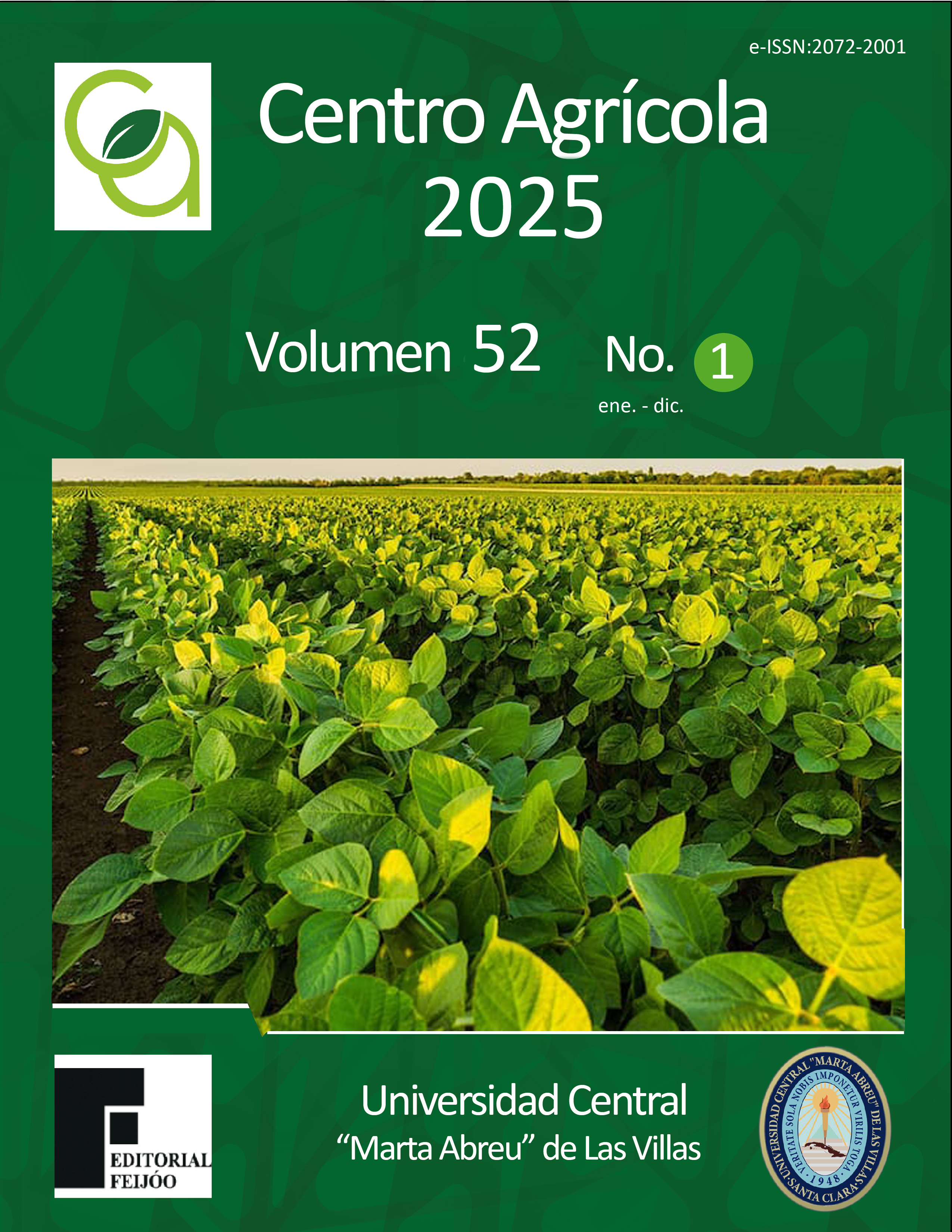CF: cag031242421
ARTICULO DE INVESTIGACIÓN
Caracterización agroazucarera de nuevos recursos fitogenéticos de caña de azúcar (Saccharum spp. híbrido) introducidos en Cuba
Agro-Sugar characterization of new plant genetic resources of sugarcane (Saccharum spp. hybrid) introduced in Cuba
Yulexi Mendoza Batista*
Rubisel Cruz Sarmiento
Arián Céspedes Zayas
Yoandris Vaillant Cáceres
Instituto de Investigaciones de la Caña de Azúcar, INICA Holguín, carretera a Mayarí s/n Guaro, Mayarí, Holguín, Cuba
*Correspondencia: Esta dirección de correo electrónico está protegida contra spambots. Usted necesita tener Javascript activado para poder verla.
RESUMEN
Contexto: Los cultivares de caña de azúcar son el elemento vital de la industria azucarera; seleccionar genotipos con características de alto contenido de azúcar y rendimiento es un paso necesario e importante en las condiciones ambientales donde estos serán introducidos.
Objetivos: Evaluar el comportamiento agroazucarero de ocho cultivares foráneos de caña de azúcar, en condiciones de secano en la provincia Holguín.
Métodos: Se realizó un experimento en un diseño de bloques al azar con tres repeticiones, con ocho cultivares foráneos de caña de azúcar, de reciente introducción en Cuba y dos testigos locales. Se evaluaron variables del rendimiento agrícola e industrial durante dos ciclos de cosecha en condiciones de secano. Además, se observó el comportamiento de los cultivares ante las principales enfermedades que afectan al cultivo en condiciones naturales y el inicio de la floración. En cada ciclo de cosecha se realizaron análisis de varianza y comparaciones múltiple de medias cuando existieron diferencias significativas entre cultivares.
Resultados: El análisis de varianza realizado a cada cosecha mostró diferencias significativas entre los cultivares para las variables de rendimiento agrícola y azucarero; en el contenido azucarero solo existieron diferencias significativas en la cepa de retoño. La mayoría de los cultivares en estudio son de alto contenido azucarero, pues todos, excepto ‘V64-16’ en la cepa retoño, mostraron comportamiento azucarero similar al testigo ‘C1051-73’.
Conclusiones: El cultivar ‘CR87-339’ alcanzó los mejores resultados en las tres variables de cosecha evaluadas y de manera consistente en ambas cepas en estudio, destacándose también los cultivares ‘Mex83-416’ y ‘Mex83-210’.
ABSTRACT
Context: Sugarcane cultivars are the vital element of the sugar industry; selecting genotypes with high sugar content and yield characteristics is a necessary and important step in the environmental conditions where they will be introduced.
Objectives: To evaluate the agro-sugar performance of eight foreign sugarcane cultivars under rainfed conditions in the Holguín province.
Methods: An experiment was conducted using a randomized block design with three replications, involving eight foreign sugarcane cultivars recently introduced in Cuba and two local controls. Agricultural and industrial yield variables were evaluated over two harvest cycles under rainfed conditions. Additionally, the behavior of the cultivars was observed, concerning the main diseases affecting the crop in natural conditions and the onset of flowering. In each harvest cycle, analyses of variance and multiple mean comparisons were carried out when significant differences between cultivars were found.
Results: The analysis of variance conducted for each harvest showed significant differences among the cultivars for agricultural and sugar yield variables; in sugar content, significant differences were found only in the ratoon stem. Most cultivars under study exhibited high sugar content, as all but ‘V64-16’ in the ratoon stem displayed sugar behavior similar to the control ‘C1051-73’.
Conclusions: The cultivar ‘CR87-339’ achieved the best results across all three evaluated harvest variables consistently in both stalks under study, with cultivars ‘Mex83-416’ and ‘Mex83-210’ also standing out.


